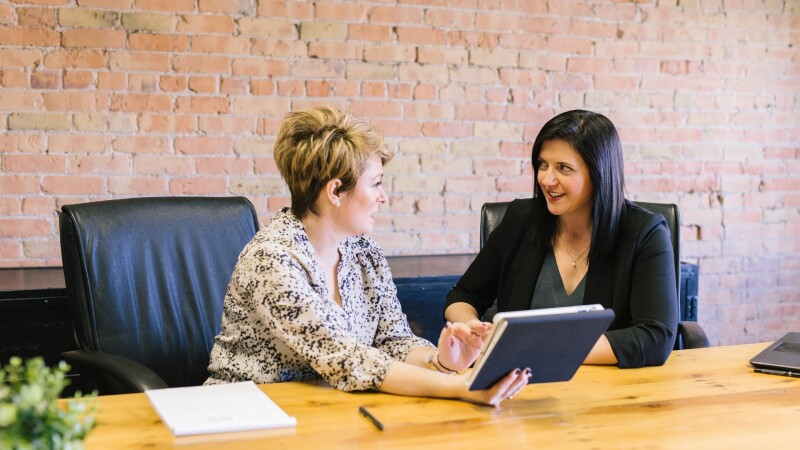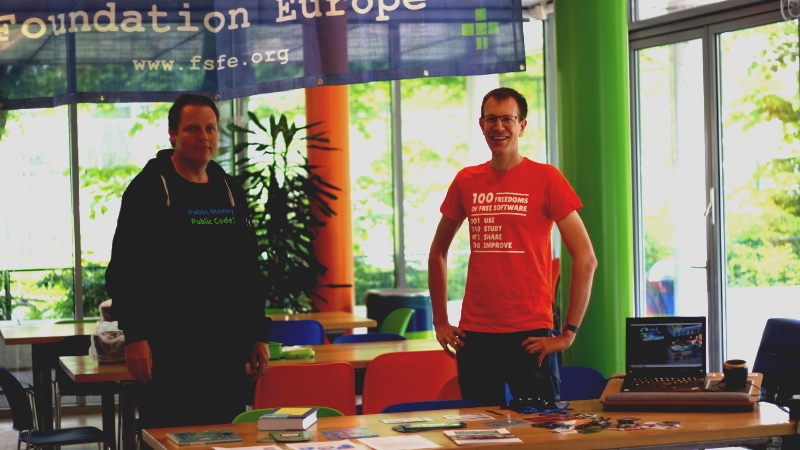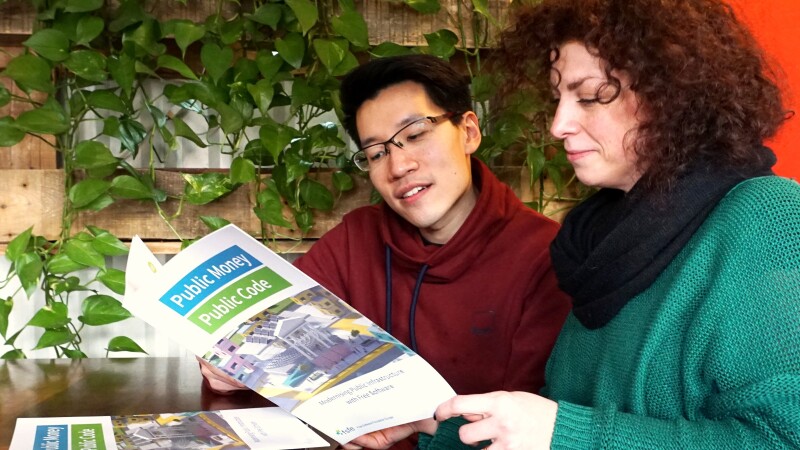The FSFE is hiring a Senior Project Manager Communication
mercredi 15 juin 2022 à 01:00The FSFE is hiring a Senior Project Manager Communication
We are looking for a Senior Project Manager Communication for 20-25 hours per week in our Berlin office. This is a great opportunity to help amplify the importance of software freedom, so that every human can use, study, share, and improve software and thereby support other fundamental rights like freedom of speech, press, and privacy.

About the FSFE
Free Software Foundation Europe is a charity that empowers users to control technology. Software is deeply involved in all aspects of our lives and it is important that technology empowers rather than restricts us. Free Software gives everybody the rights to use, understand, adapt, and share software. These rights help support other fundamental freedoms like freedom of speech, press, and privacy.
The FSFE helps individuals and organisations to understand how Free Software contributes to freedom, transparency, and self-determination. It enhances users' rights by abolishing barriers to Free Software adoption, encourages people to use and develop Free Software, and provides resources to enable everyone to further promote Free Software in Europe.
We are involved in many activities in the legal, economic, political and technical areas around Free Software. Our work is made possible by a community of volunteers, supporters, donors, and staff.
Main responsibilities
- Help shape and continuously improve the FSFE’s communication strategy.
- Ensure consistency and continuity in the implementation of the communication strategy (design, language & content) throughout different channels (website, press releases, leaflets, social media). Evaluate outreach, outcome, and impact of our communication activities and improve our communication strategies based on these findings.
- Manage media inquires and secure the FSFE’s coverage in leading press outlets.
- Maintain and expand a robust network of media and press contacts and relationships in collaboration with colleagues and volunteers in the organisation.
- Work closely with other staff and volunteers to support them writing news items, press releases, mailings, newsletters, website pages, leaflets, reports, and other publications about our work for software freedom.
- Empower volunteers and staff in different European countries to communicate the FSFE’s work to media and the public in streamlined processes.
- Lead the coordination of other communication projects/events when relevant.
Qualifications
- Strong project management and organisational skills to lead projects to improve our outreach and necessary processes.
- Excellent written and spoken English drafting and editing skills a creative mindset that can switch communication style according to channel and audience.
- Knowledge of evaluation tools and methods that help to measure impact.
- Minimum of 3 years of proven work experience in journalism, communications, media relations, public relations, or related field.
- Experience working in a non-profit organisation or in coordinating movements for social change, including working with volunteers, is an advantage.
- Graphic design skills are an advantage.
- Other European languages are considered an asset.
Attitude
We are looking for a reliable, well-organised, fast and strategic team player who wants to amply the FSFE’s work and thus support the organisation in making the world better for future generations.
You care about social and political change for the next generations. You want to efficiently help our staff and volunteers all over Europe to communicate why it is important for our society to have the freedom to use, study, share, and improve software.
How to apply
To apply, please send a maximum one-page cover letter and a maximum two-page CV and three writing examples in one PDF file named Lastname.pdf) by email to jobs@fsfe.org, with the subject "Senior Project Manager Communication". Please do not include pictures of yourself in the application.
Your personal data will be deleted 3 months after we have made our decision. The closing date for applications is Sunday, 7 August 2022. The position is for a permanent employment and the candidate would ideally be available from September 2022 onwards.
Free Software is meant to serve everyone regardless of their age, ability or disability, gender identity, sex, race, nationality, religion or sexual orientation. Hence, we encourage applications from all backgrounds and promise to judge all applications on merit, without reference to any of the characteristics listed. To promote diversity and equality in the Free Software community, we shall give preference between applications of equal strength to applicants who identify as part of a traditionally marginalised demographic in technology.
 André Ockers and Nico Rikken at the FSFE booth in the NLLGG in Utrecht, The Netherlands, May 2022.
André Ockers and Nico Rikken at the FSFE booth in the NLLGG in Utrecht, The Netherlands, May 2022.

